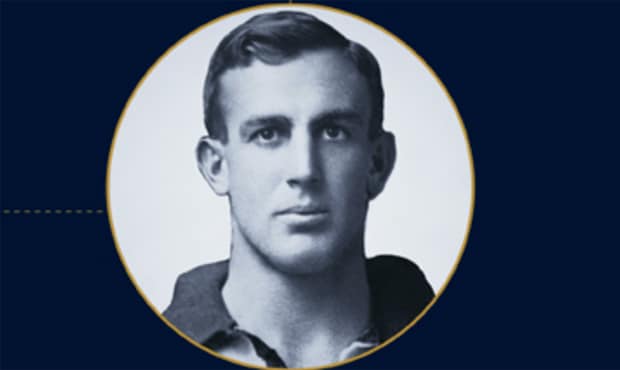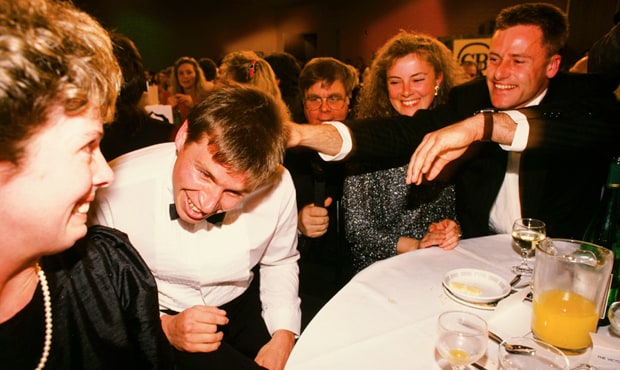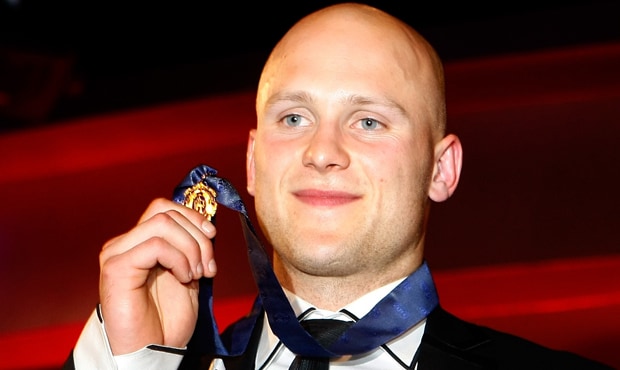1924: Edward ‘Carji’ Greeves (aged 20 in the year he won)
The man whose name now adorns Geelong’s best and fairest award won the first Brownlow Medal. Wearing number 20 (the number worn in recent years by Steve Johnson), Greeves was the VFL’s dominant centreman in the 1924 season. Back then, the umpires awarded just one vote to the best player on the ground, which is why Greeves won with a tally of just seven votes. He was also runner-up in the Brownlow Medal in 1925, ’26 and ’28. He played in two premierships for the Cats in 1925 and ’31. Greeves died in 1963 at the age of 59. He was posthumously inducted into the Australian Football Hall of Fame in 1996. He was also named in the Cats’ Team of the Century.

Edward 'Carji' Greeves, the winner of the first Brownlow Medal in 1924
1951: Bernie Smith (aged 23)
You don’t see many small defenders take out the Brownlow Medal these days, but Smith, who played in the back pocket, did just that in 1951. A South Australian who had joined the Cats from West Adelaide for the 1948 season, Smith was a brilliant reader of the play, revolutionising the reputation of defenders by setting up attacking moves rather than simply negating his opponent. He had an extraordinary 1951 season, winning the Brownlow Medal, the club best and fairest and playing in a premiership. He polled 23 votes in the Brownlow count, finishing three votes clear of South Melbourne's Ron Clegg. Smith was also part of the 1952 premiership team. In all, he played 183 games for the Cats over 11 seasons. He was named in the back pocket in both the AFL’s and Geelong’s teams of the century.
1962: Alistair Lord (aged 22)
Lord was a brilliant centreman who played for the Cats for just seven seasons before returning to his family’s farm near Cobden in the Western District. He was an outstanding player in the centre in 1962, averaging 30 disposals per game and winning both the Brownlow Medal and the club best and fairest award. He polled Brownlow Medal votes in 13 of his 18 home and away appearances that year, finishing with an extraordinary total of 28, nine more than the three players who tied for second, Essendon's Ken Fraser, Fitzroy's Kevin Murray and Richmond's Ron Branton. The following year, Lord was a key member of Geelong’s 1963 premiership team.
1989: Paul Couch (aged 25)
The boy from Boggy Creek was a revelation in Malcolm Blight’s first season at the helm of the Cats. Roaming through the centre, and using his penetrating left foot to great effect, Couch was one of the driving forces behind Geelong’s charge up the ladder, which took the club all the way to the Grand Final. Couch won both the Brownlow Medal and club best and fairest award in ’89, and he was later named on the bench in Geelong’s Team of the Century. Couch polled 22 votes in the 1989 Brownlow count, finishing two votes clear of Hawthorn's John Platten.

Paul Couch gets a pat on the back from teammate Andrew Bews after winning the 1989 Brownlow Medal
2007: Jimmy Bartel (aged 23)
Bartel came of age during the Cats’ drought-breaking premiership year in 2007. Playing in the midfield, he averaged 27.5 disposals per game and also kicked 18 goals. The umpires certainly enjoyed his work, as they awarded him an impressive 29 votes in the ’07 count. Bartel finished seven votes clear of the three players who tied for second place, North Melbourne’s Brent Harvey, West Coast’s Daniel Kerr and the Brisbane Lions’ Simon Black.
2009: Gary Ablett Jr (aged 25)
Ablett had been one of the favourites to win the 2008 Brownlow Medal, only to finish two votes behind the winner, Western Bulldogs midfielder Adam Cooney. But he made it impossible for the umpires to overlook him in 2009, averaging 34 disposals per game and kicking 27 goals. He polled a remarkable 30 votes in the Brownlow count, to finish eight clear of Carlton’s Chris Judd. Later that week he played in his second premiership when Geelong edged out St Kilda in a classic Grand Final.

Gary Ablett Jr shows off the 2009 Brownlow Medal


